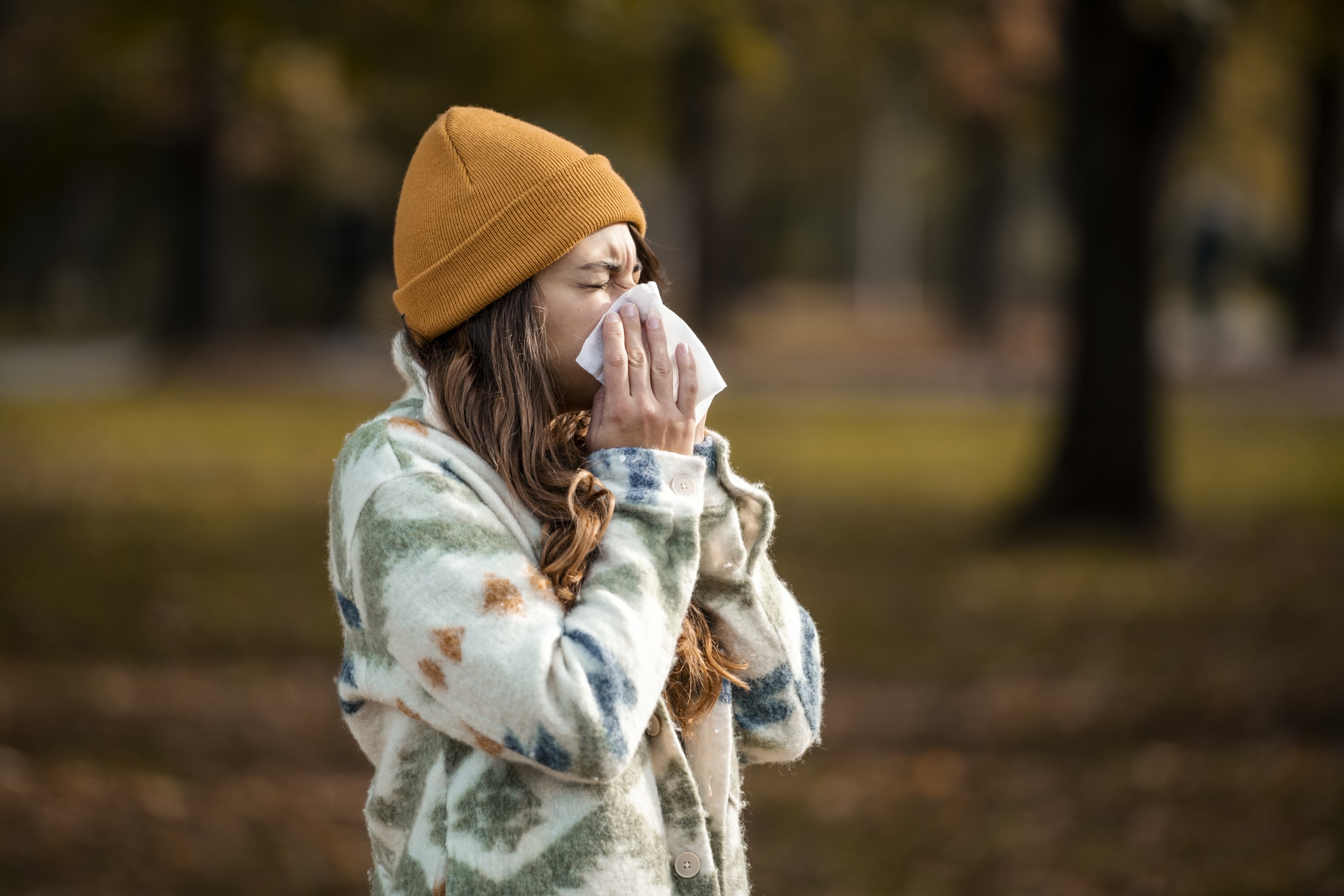No products in the cart.

If you think it’s too late in the year to be concerned with allergies, think again! While we often envision allergy season as the spring bloom, fall allergies wreak havoc on millions of us every year. The most common fall allergy is colloquially known as hay fever—a reaction to ragweed pollen that can start as early as mid-August and last as late as the first frost in late October or even early November. Autumn’s shifting weather can also cause increased exposure to allergens such as mold, dust mites, and pet dander.
Here are a few ways to reduce the impact of these troublesome irritants:
Dress for success! If you suffer from hay fever or other pollen allergies, make it a habit to shed your outdoor clothes when you arrive home and put on something fresh for indoor wear. Pollen can cling to clothing, hair, and even skin after we’ve been out and about. Shedding shoes and coats in the garage can go a long way toward keeping ragweed where it belongs: outside!
Suck it up! More time spent indoors as the weather cools can mean more exposure to indoor allergens like dust mites, pet dander, mold, and even tracked-in pollen. Do your part to keep irritating inhalants to a minimum by vacuuming and dusting weekly.
Purify your space! Did you know that indoor air can sometimes be even more polluted than the air outdoors? Keeping your windows and doors shut tight may help keep pollen at bay, but to keep indoor air clean, invest in an air purifier—particularly one with a HEPA filter. A good air purifier with help reduce the amount of dust, dander, pollen, and even mold circulating in your home.
Ditch the leaf pile! They may be fun for kids and dogs to jump in, but lingering piles of leaves in the yard can be a breeding ground for mold during the cool, damp months of autumn. Other common culprits are leaf-clogged rain gutters, unraked lawns, and even compost piles. Be proactive about clearing fallen leaves, and be sure to situate your compost pile away from your home.
Dry out! Bathrooms, basements, and other damp areas can often be breeding grounds for moisture-loving mold and mildew. Investing in a good dehumidifier can help reduce mold growth, and keep your indoor air fresh. Aim to keep indoor humidity between 35 and 50 percent.
Support with supplements! We hear most often about OTC remedies like decongestants and nasal sprays, but you can help bolster your immune system even before symptoms begin with proper supplementation. BreatheClear with NTFactor® contains powerful bioflavonoids, including quercetin, a natural anti-inflammatory proven to help the body manage the histamine response that causes allergy symptoms. Quercetin and other bioflavonoids work to open the nasal and respiratory passages, making it easier to breathe and reducing bothersome sinus symptoms that so often accompany allergic reactions. BreatheClear also contains the powerful NTFactor® Lipid blend, proven to repair cell membranes and reduce the fatigue that so often accompanies allergy symptoms.
With fall settling in across the nation, there’s no better time to take the steps necessary to breathe easier this autumn.

